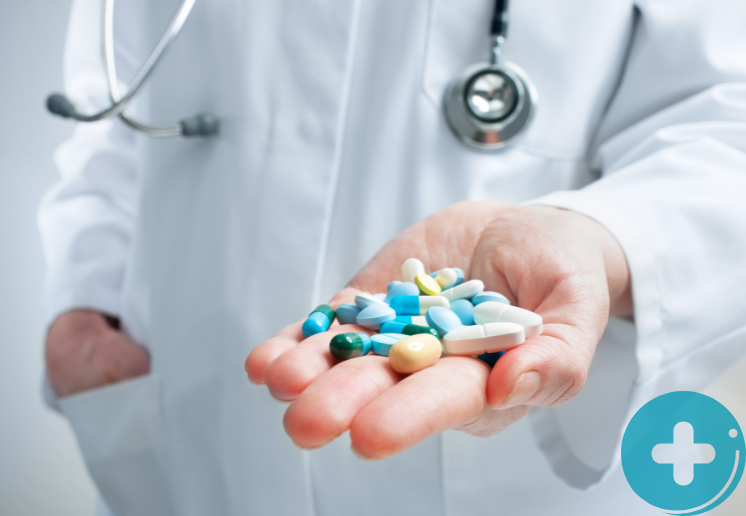Table of Contents
Managing diabetes often involves multiple daily insulin injections, a routine that can feel overwhelming. And incredibly so when you have to mix different types of insulins, i.e. NPH and regular insulin. It adds another layer of complexity for accurate dosing.
Incorrect mixing can lead to inconsistent blood sugar control, impacting daily life and long-term health. That’s why it is one of the key questions when you are trying to become the best registered nurse.
So through this blog, I’ll explain how to mix NPH and regular insulin the right way. It’s going to be a key topic of learning whether you are appearing for NCLEX or taking CPNRE or writing your RExPN. Let’s begin with a little overview of these two insulins.
What is NPH Insulin?
NPH insulin (Neutral Protamine Hagedorn) is a man-made version of insulin, a hormone naturally produced by the pancreas that helps your body regulate blood sugar levels. It’s classified as an intermediate-acting insulin because it starts working slower and lasts longer than regular insulin.
How It Works
NPH insulin works by replacing the insulin that your body isn’t producing or isn’t producing enough of. It helps move sugar from your blood into other body tissues where it’s used for energy. By reducing blood sugar levels, NPH insulin helps manage the symptoms of diabetes.
Onset, Peak, and Duration:
- Onset: NPH insulin starts working within 1 to 3 hours after injection.
- Peak: It reaches its maximum effect between 6 and 8 hours.
- Duration: It continues to work for 12 to 16 hours.
NPH insulin should be injected subcutaneously (under the skin) and not into a muscle. Doctor or diabetes educator will show you the proper injection technique.
How is NPH Different From Regular Insulin?
NPH insulin and regular insulin are both types of insulin used to manage blood sugar levels in people with diabetes. But there are some key differences.
Onset of Action
Regular Insulin starts working relatively quickly, usually within 30 minutes to 1 hour after injection. It’s often used before meals to control blood sugar spikes that occur after eating.
On the other hand, NPH Insulin has a slower onset of action, typically starting to work within 1 to 3 hours after injection.
Peak Effect
Regular Insulin reaches its peak effect (when it’s working most strongly) within 2 to 4 hours after injection. NPH Insulin, on the other hand, peaks later, usually between 6 and 8 hours after injection.
Duration of Action
Regular Insulin has a shorter duration of action, typically lasting for 6 to 8 hours. NPH Insulin, on the flip side, has a longer duration of action, lasting for 12 to 16 hours.
Appearance
Regular Insulin is a clear solution. But NPH Insulin is a cloudy suspension. This is because it contains protamine, a protein that slows down the absorption of insulin.
Simply put, think of regular insulin as “fast-acting” and NPH insulin as “intermediate-acting.” Regular insulin is like a quick burst of energy, while NPH insulin is like a slow-burning fuel.
Now on to a question that is prevalent when you are trying to become a registered nurse. Let’s take a look.
How to Mix NPH and Regular Insulin the Right Way?
First you need to understand that when trying to mix these two types of insulins, the regular one will be drawn first, and then the NPH.
Before you mix the two, here are the necessary supplies:
- Your vials of NPH and regular insulin
- An insulin syringe
- Alcohol swabs
After getting these, follow this process. (For this process, let’s consider the mix has to be of X cc of regular insulin and Y cc of NPH.)
Step 1: Wash your hands: Thoroughly wash your hands with soap and water. This helps prevent infection.
Step 2: Prepare the NPH insulin: Gently roll the NPH insulin vial between your palms to mix the suspension. Do not shake it, as this can create air bubbles that can affect the dose.
Step 3: Air up the syringe: Draw X+Y cc of air into the syringe.
Step 4: Inject air into the NPH vial: Insert the needle into the NPH vial and inject Y cc of air. This creates pressure in the vial, making it easier to withdraw the insulin later. Remove the syringe from the NPH vial.
Step 5: Inject air into the regular vial: Insert the needle into the regular vial and inject X cc of air. This creates pressure in the vial, making it easier to withdraw the insulin later. Remove the syringe from the regular vial.
Step 6: Draw the regular insulin: Insert the syringe back in the regular vial and turn the vial upside down. Slowly withdraw the prescribed dose of regular insulin into the syringe.
Step 7: Withdraw the NPH insulin: With the needle still in the regular vial, check for any air bubbles in the syringe. If there are bubbles, gently tap the syringe to make them rise to the top and then push them back into the vial. Now, carefully withdraw the prescribed dose of NPH insulin into the syringe.
Step 8: Check the dose: Double-check that you have the correct total dose of insulin in the syringe.
If you have accidentally drawn more than prescribed dosage, DON’T inject it back into the vial. Always start over. Even small errors in dosage can affect your blood sugar levels.
Always draw up the regular insulin (clear) before the NPH insulin (cloudy). This prevents contamination of the regular insulin vial with NPH insulin.
This is just one of the key things you get to learn when you get an NCLEX program with FBNPC. So sign up with us. For now, let’s move on to the “Why”.
Why Mix the NPH and Regular Insulin?
Mixing NPH and regular insulin offers a significant advantage for people with diabetes: it reduces the number of injections needed. Here’s why:
Convenience
Instead of taking two separate shots (one for regular and one for NPH) at the same time, you can combine them into a single injection. This can be especially helpful for people who take multiple injections throughout the day.
Combined Action
Mixing allows you to get the benefits of both types of insulin in one dose. The regular insulin provides a quick burst of action to cover blood sugar rises after meals, while the NPH insulin provides longer-lasting background coverage to keep blood sugar levels stable between meals and overnight.
Imagine you need both a quick boost of energy and sustained energy throughout the day. That’s where this combo comes in.
FAQs on Mixing the NPH and Regular Insulin
Q.1) What if I accidentally draw up NPH insulin before regular insulin?
If you accidentally draw up NPH first, you must discard the entire dose in the syringe and start the mixing process over with a new syringe. Do not inject it.
Q.2) How do I know if my insulin is still good?
Regular insulin should be clear and colorless. NPH insulin should be uniformly cloudy. Do not use either type of insulin if it is discolored, clumped, or has particles in it. Check the expiration date on the vial as well.
Q.3) How should I store my insulin?
Unopened insulin vials should be stored in the refrigerator. Once opened, vials can be stored at room temperature (below 86°F or 30°C) for up to 28 days (check the specific manufacturer’s instructions). Do not freeze insulin.
Q.4) Can I mix insulin in advance and store it for later use?
It’s generally not recommended to pre-mix insulin and store it. The stability of the mixture can change over time, which can affect its action. It’s best to mix insulin immediately before injecting it.
Let’s Conclude
Mixing NPH and regular insulin can be a convenient way to manage diabetes by reducing the number of daily injections. It combines the rapid action of regular insulin with the longer-lasting action of NPH insulin (for background coverage) into a single dose.
The key to safe and effective mixing lies in following the correct procedure: always drawing up the clear (regular) insulin before the cloudy (NPH) to prevent contamination. While mixing offers the advantage of fewer injections, it’s essential to remember that it’s not suitable for everyone.
So register for the best nursing programs with FBNPC and learn the proper medical procedures today!



